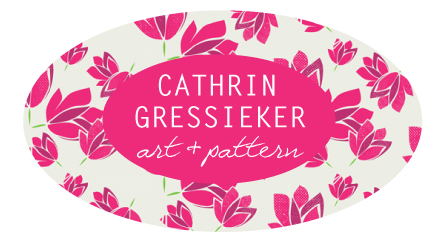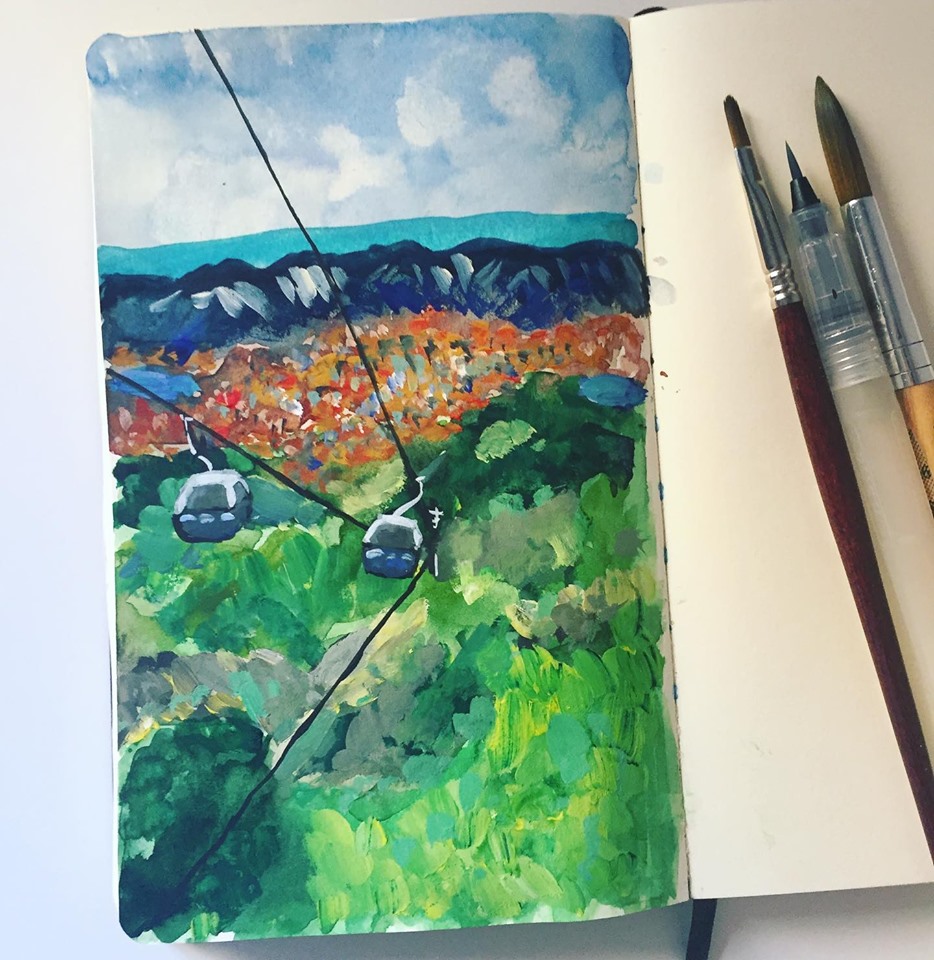
Hello from Tirana, the capital of the country the Albanians themselves call Shqipëria! We are starting our summer trip around the country in this laid-back and more-modern-than-one-would-think city and get a first taste of the feel, food, people – and scenery. This quick sketch is from our funicular ride up the Dajti Mountain with spectacular views of Tirana and right behind the mountains, before the sky starts – the Mediterranean Sea.
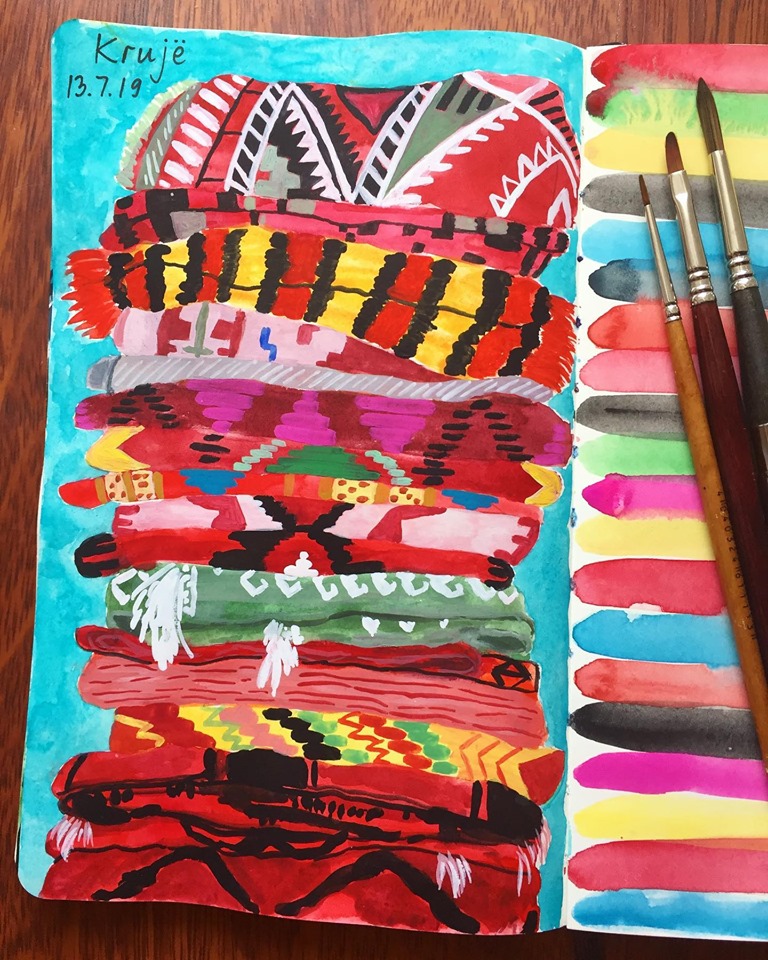
A pile of Kilim rugs seen in the Old Bazaar street in Krujë. If you would like to stock up on these traditional handwoven wool rugs, this town is the place to do it in Albania. They are brightly and beautifully displayed hanging outside the shops, and if you go inside you can see the looms where they are still made in the authentic Ottoman technique.
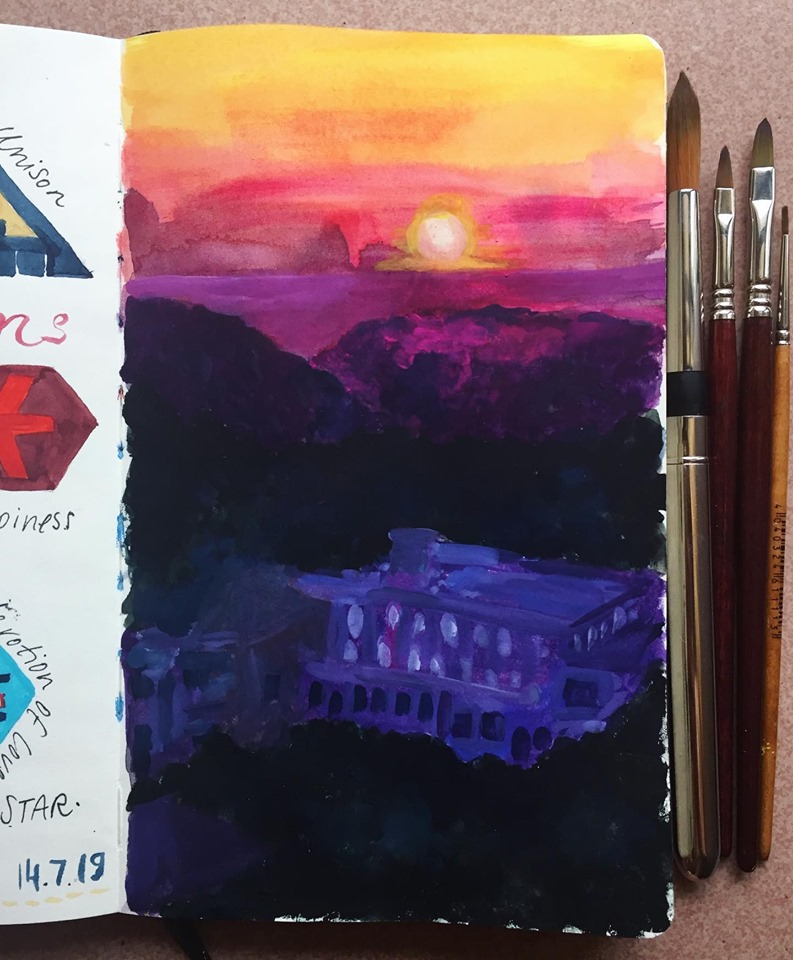
How to paint a sunset without making it look kitschy is one of the mysteries of painting. A sunset can be so beautiful and breathtaking in real life and then in an attempt to paint it – pure cheese. But still, on our last night in the mountains of Krujë, while packing for travelling to the coast the next day, I was stopped in my tracks for the view from the balcony of our hotel room, the spectacle of colours above the settling darkness, the sun dipping into the Adria some 20 kilometers away, and I had to paint it – cheese or not.
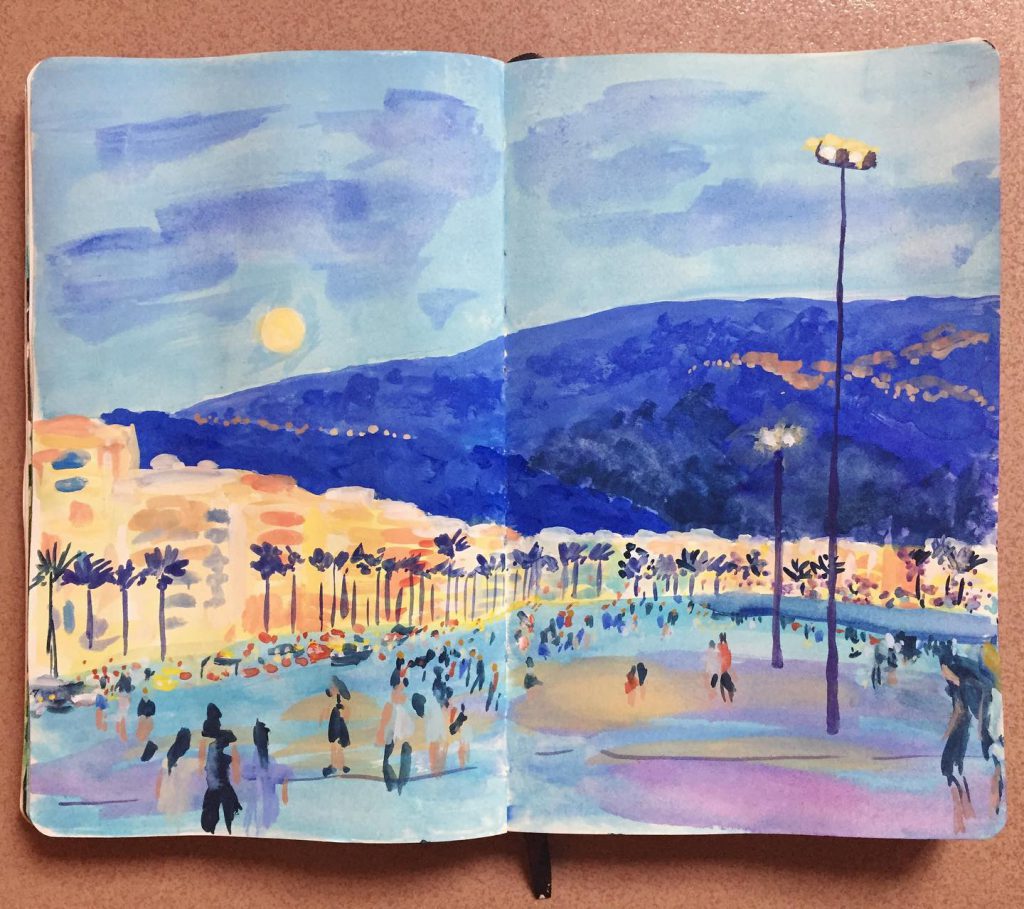
From a sunset in the mountains of Krujë overlooking the Mediterranean, to a moonrise at the sea with the view of the mountains in Vlorë the next evening. Vlorë is Albania’s second largest city at the coast and its bay seems like the Albanian version of the Copacabana. We mingled with the sun- and sea bathers during the day and then at the blue hour the promenade came alive and buzzing with everybody strolling around, from babies to old ladies dressed in black. And when we had just sat down for an after-dinner-ice cream at a café, a perfectly round and glowing moon emerged from behind the mountain like a big surprise. What I can say after a week here, Albania is full of surprises and totally different from all my meager expectations.
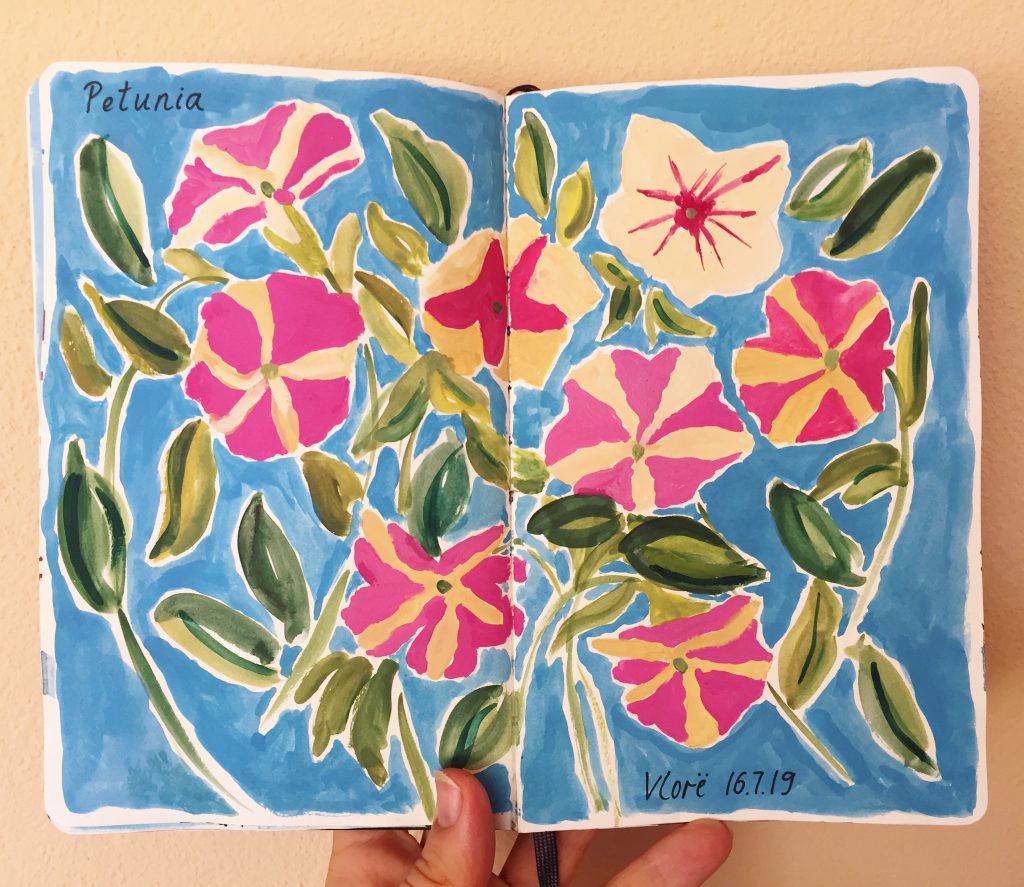
Travelling in a new-to-me country like Albania means seeing, trying and learning new things, some of them out of my comfort zone. All the places we visit, the way of transportation, the food we eat, the people we meet, the language (did you know that Albanian is not related to any other language?), and all the little things. Also in my travel sketchbook I am stepping out of my comfort zone. I have not warmed to gouache before, I always preferred the flow and unpredictability of watercolours that seemed to come naturally to me. Gouache left me not happy with the results and I didn’t enjoy the painting process. BUT, painting in my travel sketchbook I started to appreciate the advantages of gouache, the possibility of layering and mixing different consistencies of paint, its flatness and kind of vintage-y look. Without further ado, here is my first gouache floral. Flowers I saw in Krujë, painted in Vlora (of all names). And speaking of names, I have just learned that they are Petunias.
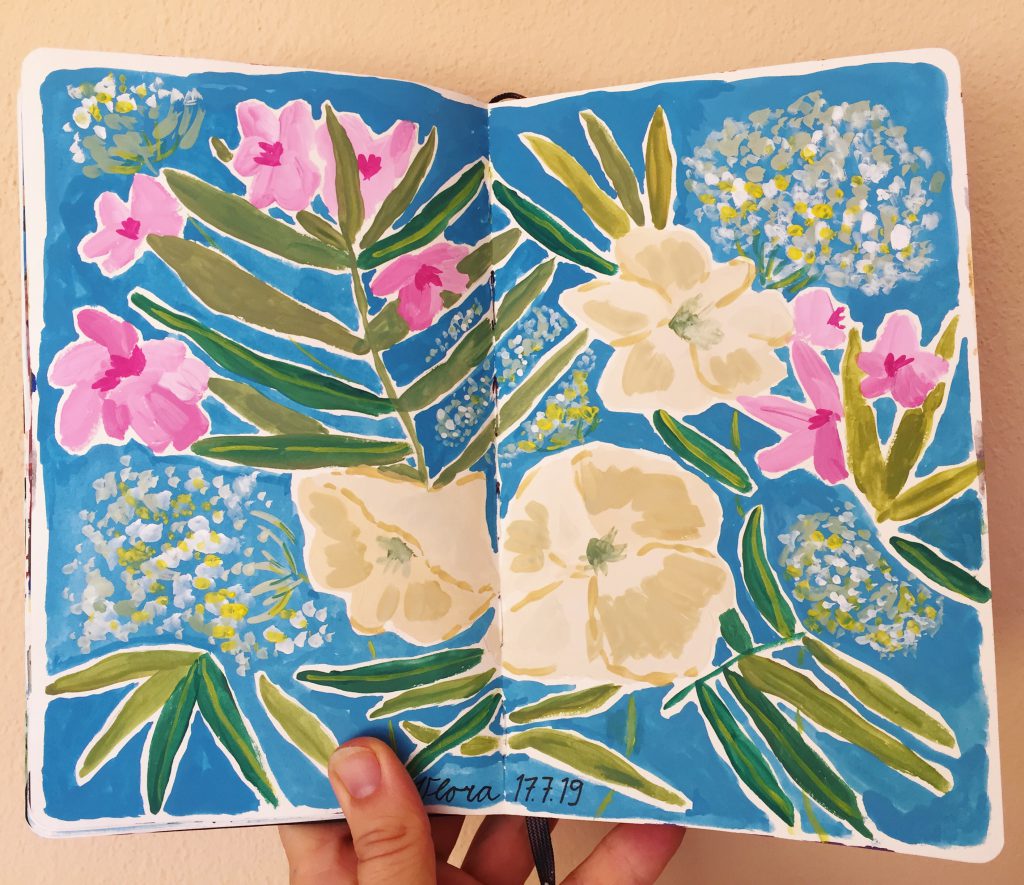
Another Vlora floral, in the same Mediterranean colour palette as before.
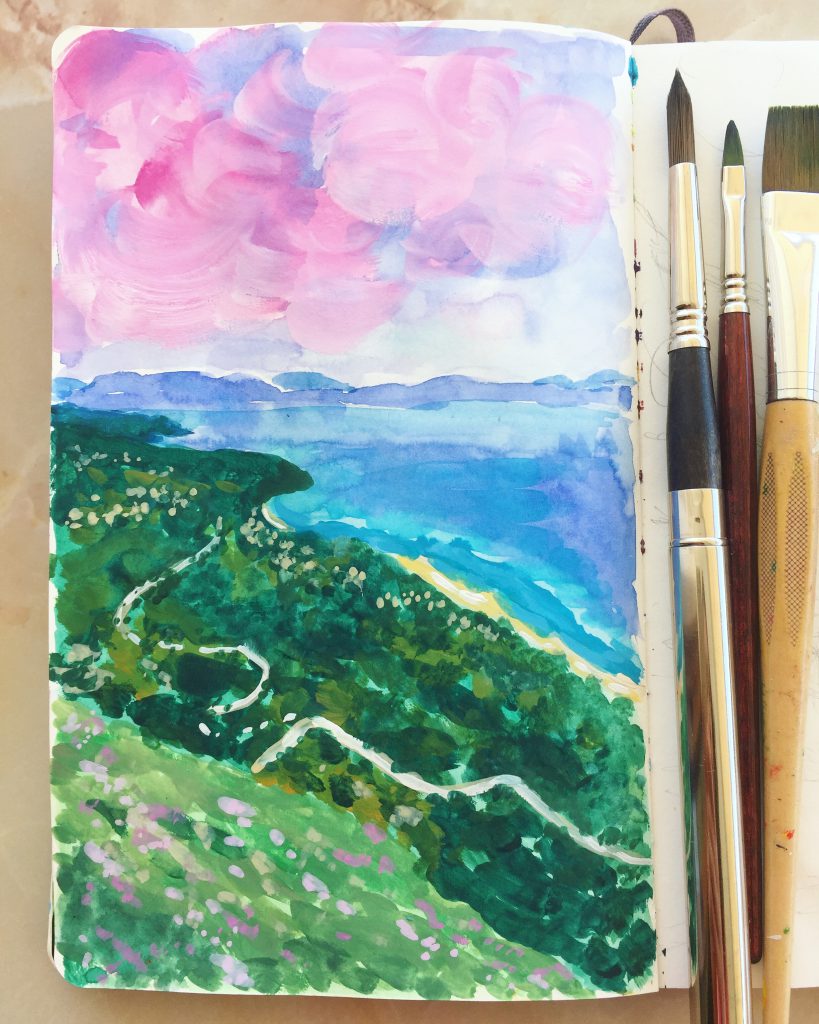
The road to Himarë. After two hours of the bus (German 1970s based on the interior design, and a very careful driver) slowly winding its way through the Ceraunian Mountains, we reached the highest point of the Llogara Pass (1027m) and were then rewarded with spectacular views of the Albanian Riviera. Leaving the Adria behind it now becomes the Ionian coast. If Ionian Sea sounds Greek to you, you’re right, you can the see the island of Korfu at the horizon.
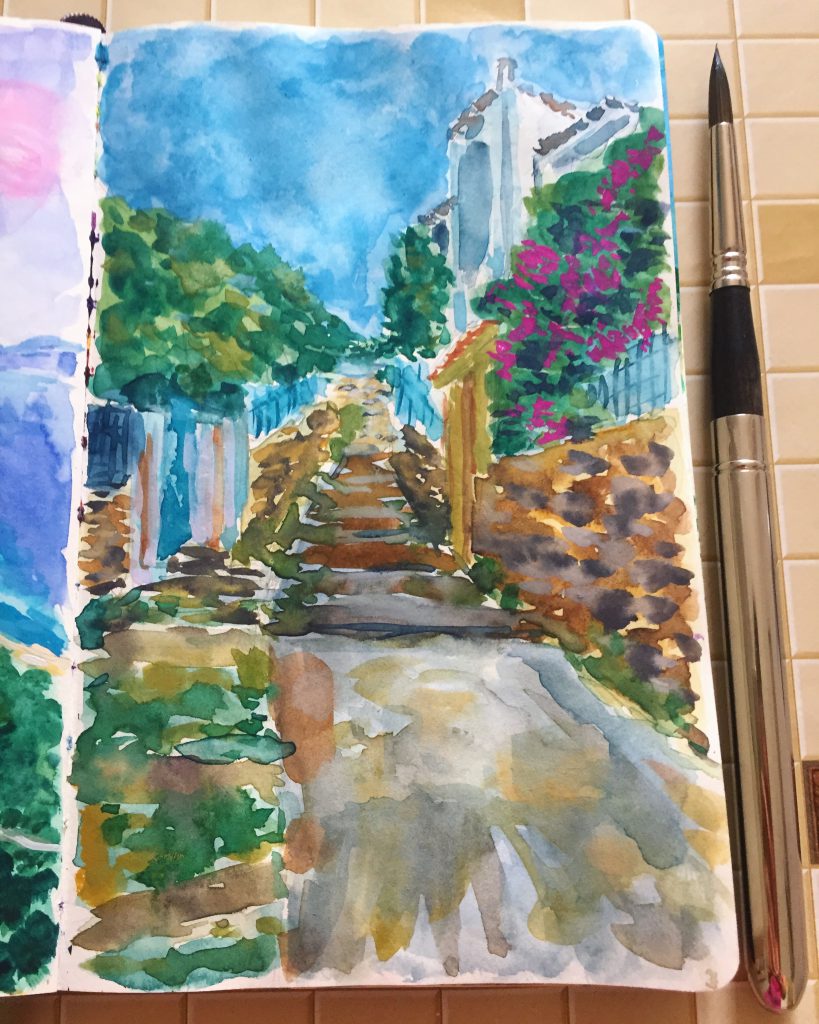
A cobbled alley up the hills of Himarë, on the way from our apartment down to the beach. You can’t deny the Greek influence, as the Greek minority of Albania lives in this area of the Riviera. We are spending a couple of super relaxed days here, without a worry in the world, just sun, sea, food, sleep, repeat.
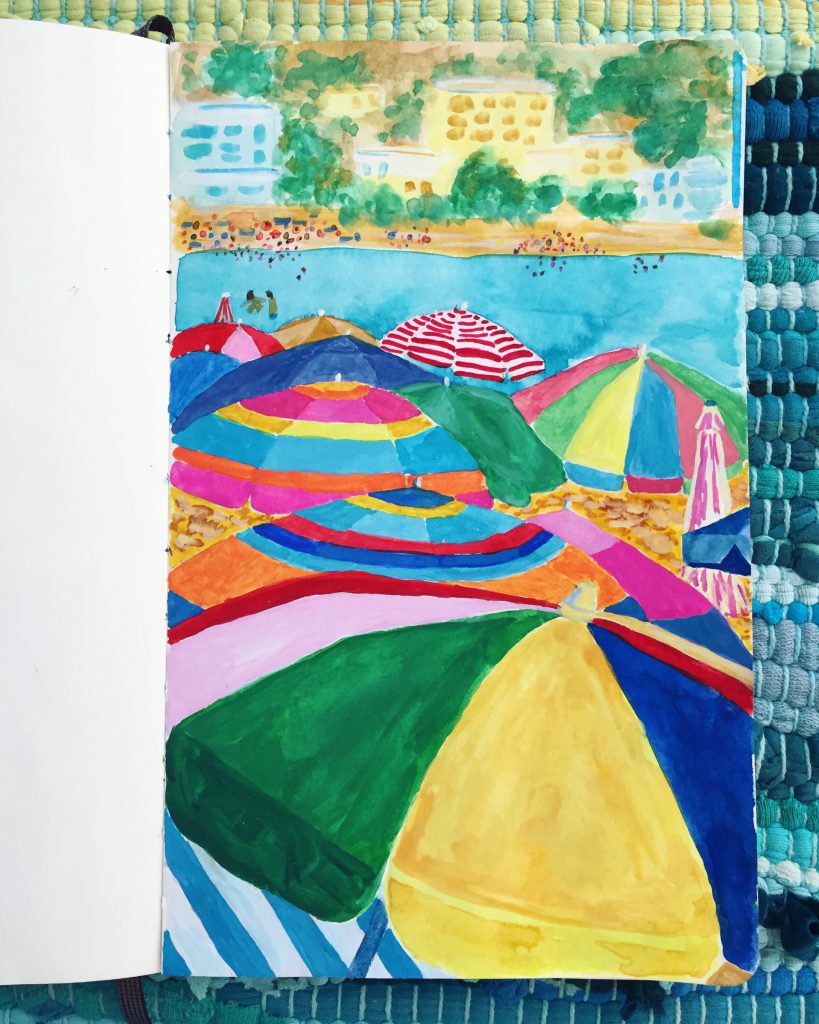
The beach at Himarë. At this beach nearly everybody brought their own parasols, put them in the sand and enjoyed a couple of nice hours in the shade, interrupted with the occasional dip in the Mediterranean. At siesta time, and even later overnight, they were just closed and left there, waiting for the next day. I loved the random geometric patterns they formed.
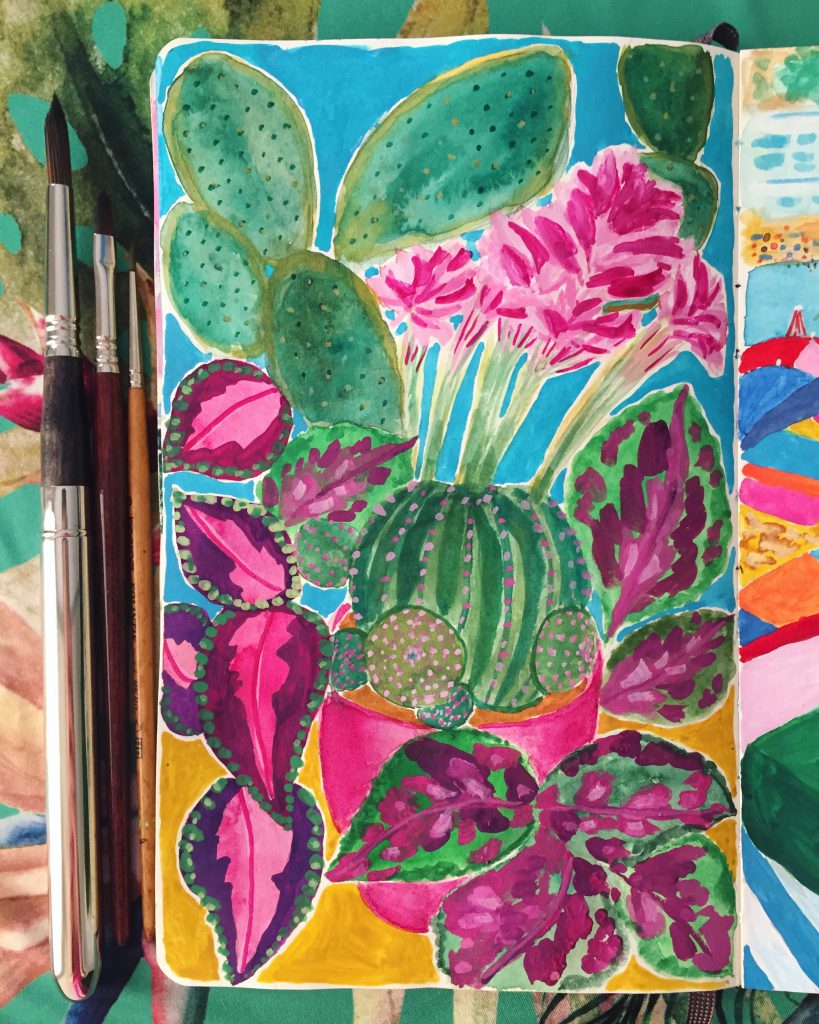
Going down the Albanian Riviera deep south, the vegetation almost becomes tropical. In Sarandë there are palm trees, banana plants, cacti and the occasional Monstera, probably most of them man-planted, thriving in the mild Mediterranean climate.
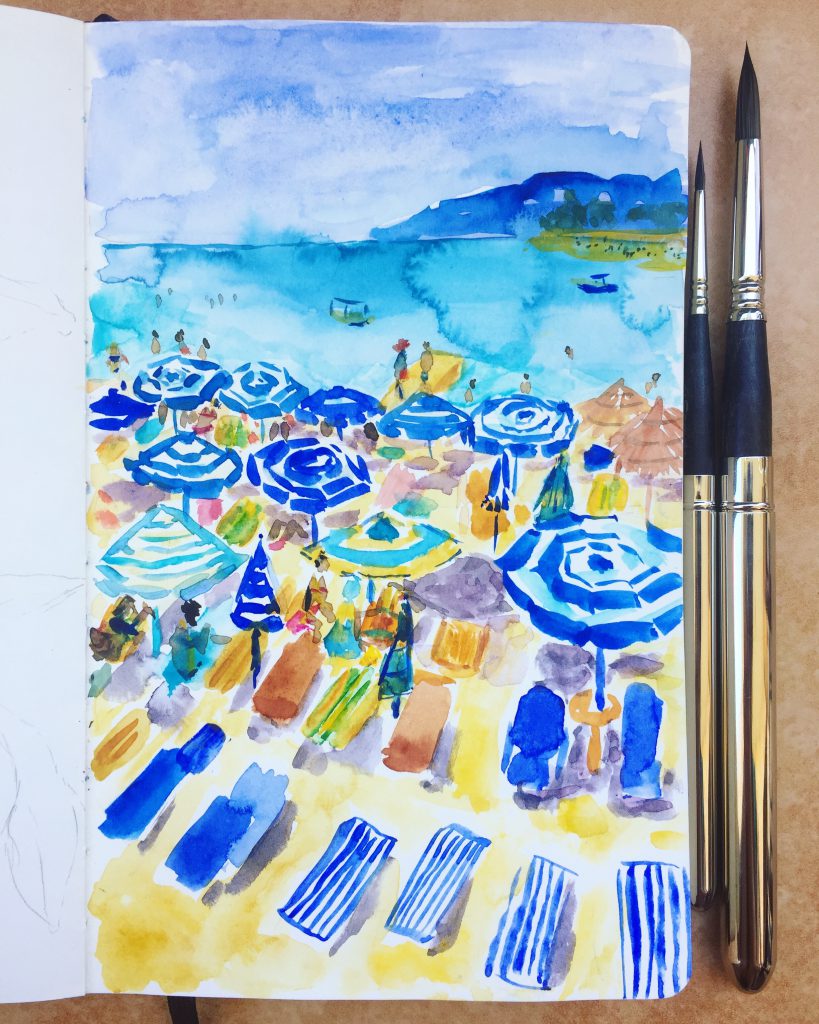
Paradise Beach in Ksamil, at the deepest southern end of Albania.
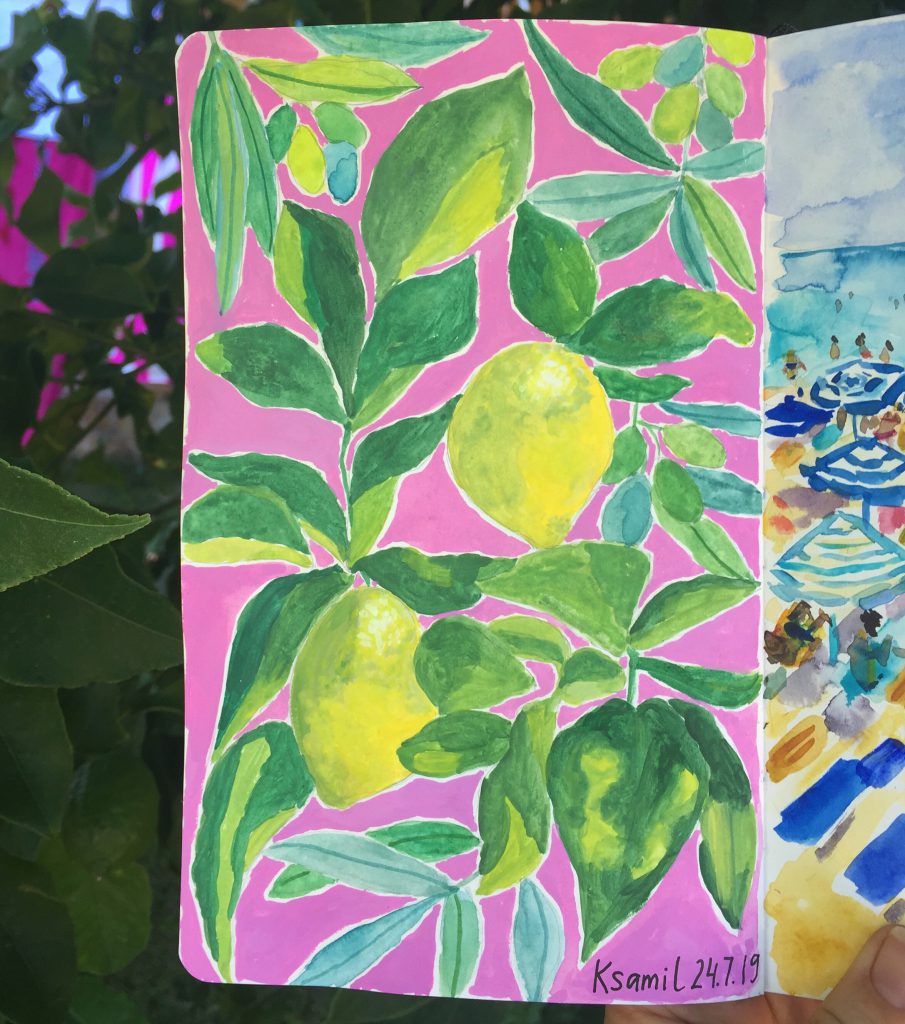
The village of Ksamil was built in the 1960s, as a temporary place to live for the workers of the surrounding state farms for citrus and olives. Local people still remember the clouds of lemon and orange fragrance that would fill the village in spring. Within the last couple of years, the beautiful beach with its tropical feel has changed from an insider tip to the most crowded place at the Albanian Riviera in summer. But you can still see a lot of lemon and olive trees around, like these in the garden of our guesthouse.
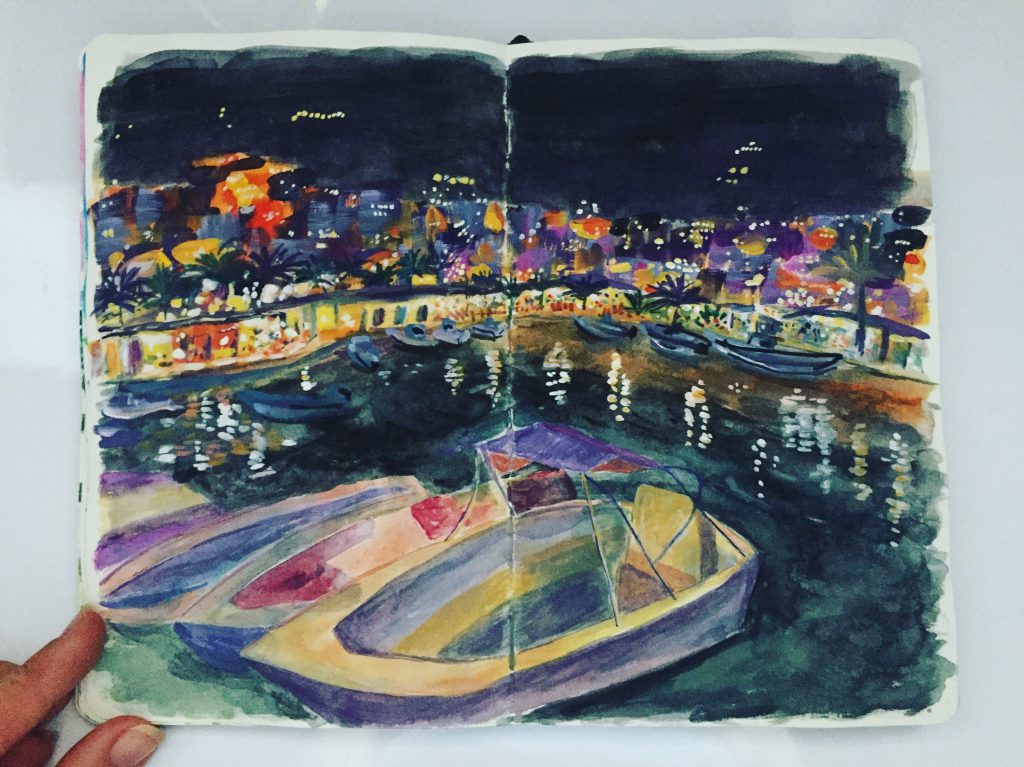
We have left the Albanian Riviera and are heading back to Tirana, with stops in Gjirokastër and Berat.
This page says goodbye to the beautiful coast and is inspired by our evening walk – called xhiro here (pronounced like the Italian giro) in Sarandë. Not in the painting – the hundreds of well-dressed people that are taking part in this Albanian tradition.
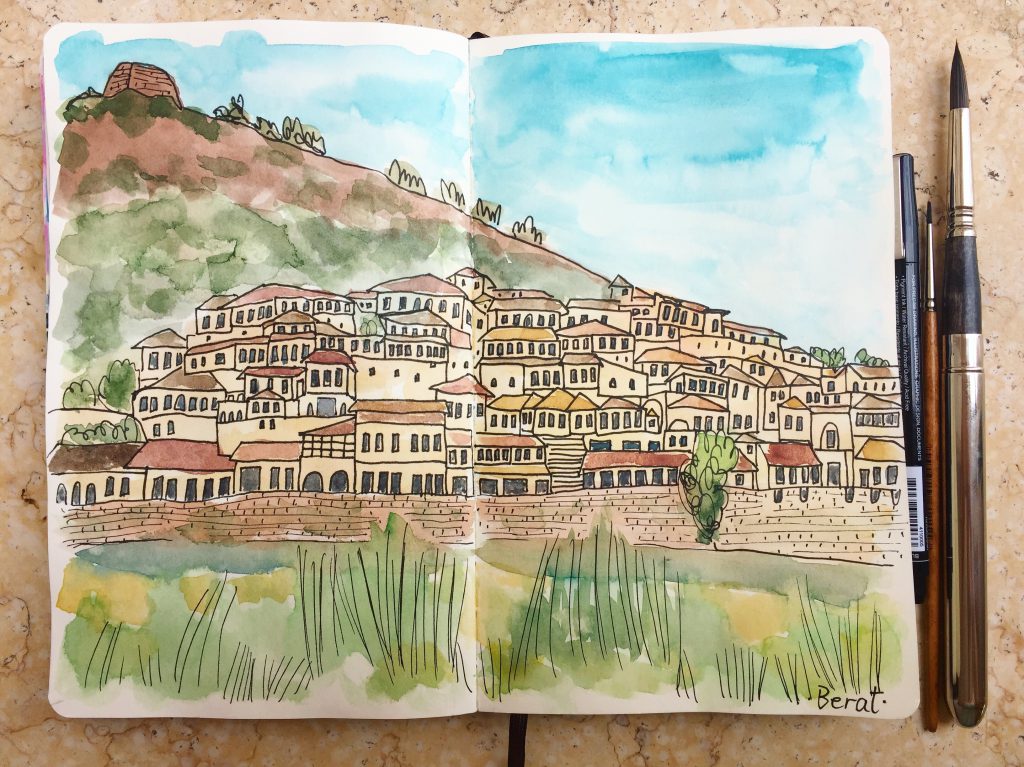
Berat is called the ‘town of a thousands windows’ and it is easy to see why. Due to its historical Ottoman houses climbing up the hill to the castle, Berat is an UNESCO world heritage site. Its fairy tale atmosphere really charmed me and yes, we climbed all the way up to the castle fortress, in midday heat.
